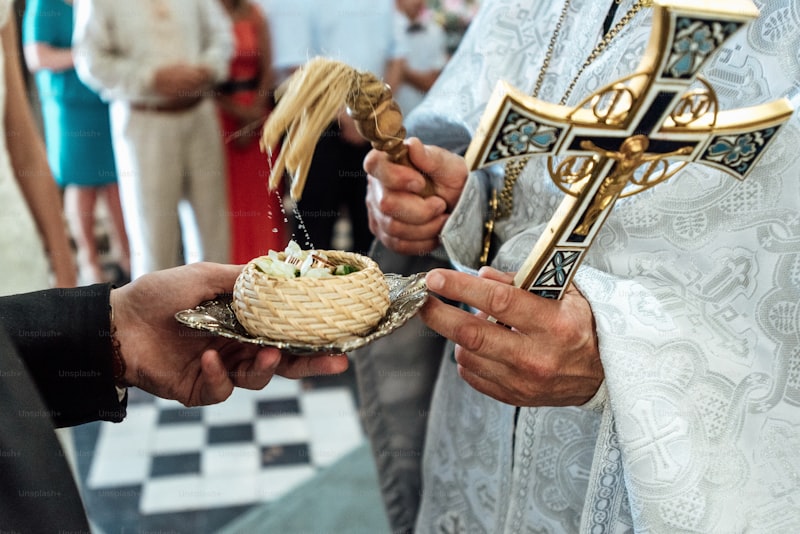Diverse Cultural Attire for Weddings: Celebrating Love Across Cultures
Diverse Cultural Attire for Weddings: A Beautiful Tapestry of Traditions
Weddings are a celebration of love, unity, and commitment, often marked by unique cultural traditions and practices. One of the most visually captivating aspects of weddings is the diverse cultural attire worn by the couples and their guests. In this article, we will delve into the rich tapestry of wedding attire from different cultures, highlighting the significance, styles, and vibrant colors that adorn these special occasions.
The Significance of Cultural Attire in Weddings
Cultural attire in weddings serves multiple purposes. Firstly, it honors the couple's heritage, allowing them to embrace their roots on their special day. Secondly, it signifies the merging of cultures, particularly in multicultural marriages where partners hail from different backgrounds. Lastly, wearing traditional attire adds an element of authenticity and grace to the wedding, making the event memorable not only for the couple but also for their guests.
Exploring Different Cultural Attires for Weddings
The attire worn at weddings varies significantly across cultures, each with its unique charm and significance. Below, we explore some popular wedding outfits from around the world:
| Culture | Attire | Significance |
| Indian | Lehenga and Sherwani | The lehenga is a traditional dress, often ornately embroidered, representing elegance. The sherwani is a formal garment worn by men, signifying royalty. |
| Chinese | Qi Pao and Chang Shan | These traditional dresses are characterized by their intricate designs, representing grace and femininity for women and power for men. |
| Scottish | Kilt and Ghillie Shirt | The kilt is a knee-length garment made of woolen cloth with a tartan pattern, symbolizing Scottish heritage. |
| Japanese | Kimono and Hakama | The kimono is a traditional garment that symbolizes purity and elegance, while the hakama is worn by men and reflects respect and tradition. |
| Mexican | Huipil and Charro Suit | The huipil is a colorful embroidered dress representing indigenous culture, while the charro suit reflects Mexican masculinity and tradition. |
Showcasing Traditional Wedding Attire
Let’s dive deeper into some notable traditional wedding attires:
Indian Weddings
Indian weddings are known for their vibrant colors and intricate details. The bride often wears a lehenga, adorned with elaborate embroidery and paired with stunning jewelry. The groom typically dons a sherwani, complemented with a turban. The use of red and gold symbolizes prosperity and fertility, making these colors predominant in Indian wedding attire.
Chinese Weddings
In Chinese culture, red is considered a symbol of good fortune. The bride typically wears a red qi pao, intricately designed with gold embroidery, while the groom may don a matching outfit or a traditional chang shan. The combination of vibrant colors and traditional motifs epitomizes a happy union and a prosperous future.
Scottish Weddings
Scottish weddings are unique, showcasing the kilt as a central piece of attire for the groom and his groomsmen. The bride may choose to wear a white dress or a tartan-inspired gown, reflecting Scottish heritage. The use of family tartans in the kilt represents a connection to one's ancestry.
Japanese Weddings
Japanese wedding attire is a beautiful blend of modern and traditional elements. The bride often wears a white kimono for the ceremony, symbolizing purity, and may change into a colorful uchikake later during the reception, adding a dynamic touch to her presentation. The groom usually dons a black hakama, emphasizing respect for tradition.
Mexican Weddings
Mexican wedding attire is characterized by bright colors and intricate embroidery. The bride often wears a huipil, with designs reflecting her cultural background, while the groom may choose a traditional charro suit. This attire not only showcases individual heritage but also celebrates the rich tapestry of Mexican culture.

Understanding the Evolution of Wedding Attire
While traditional wedding outfits are cherished, many cultures have seen a shift towards modern interpretations of these attires. Couples might choose to incorporate contemporary designs while still paying homage to their cultural roots. This evolution creates a beautiful fusion that resonates with both tradition and modernity.
Choosing the Right Attire for Your Wedding
When selecting wedding attire, consider the following:
- Understand Your Heritage: Explore your family's cultural background and determine which attire resonates with you.
- Embrace Modernity: Don’t hesitate to mix traditional and modern designs for a unique look.
- Comfort is Key: Ensure that whatever you choose is comfortable, as weddings often involve long hours of festivities.
- Consult a Designer: Collaborate with a designer familiar with cultural attire to create a tailored outfit that reflects your individuality and your cultural background.
Conclusion: A Celebration of Unity and Diversity
Diverse cultural attire for weddings is not just about fabric and design; it embodies the love, respect, and unity between couples from various backgrounds. As we celebrate weddings, let us also cherish the traditions that shape us. Whether you choose to wear traditional attire or modern interpretations, the essence of cultural attire lies in honoring your roots and celebrating your love story.
When planning your wedding, consider the significance of your attire and its impact on the overall celebration. Remember, the thread of love woven through cultural attire is what makes weddings truly memorable.
In closing, embrace the diversity and beauty of wedding attire, and allow it to reflect your journey as a couple, blending tradition with your unique style.